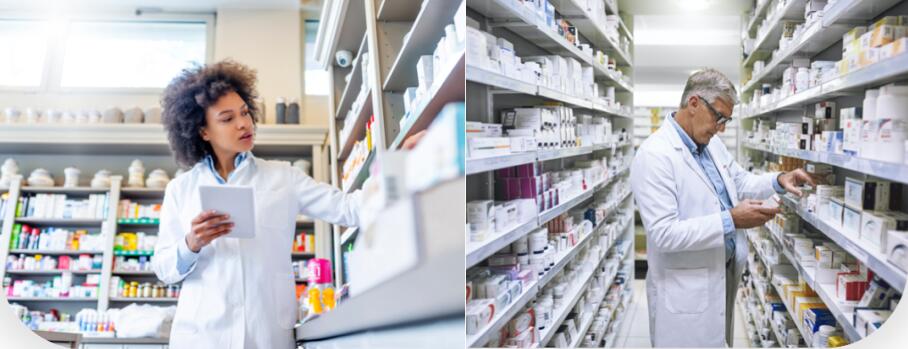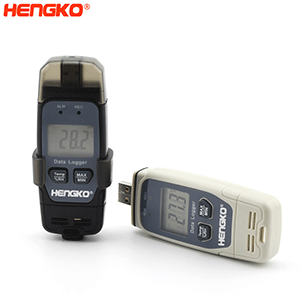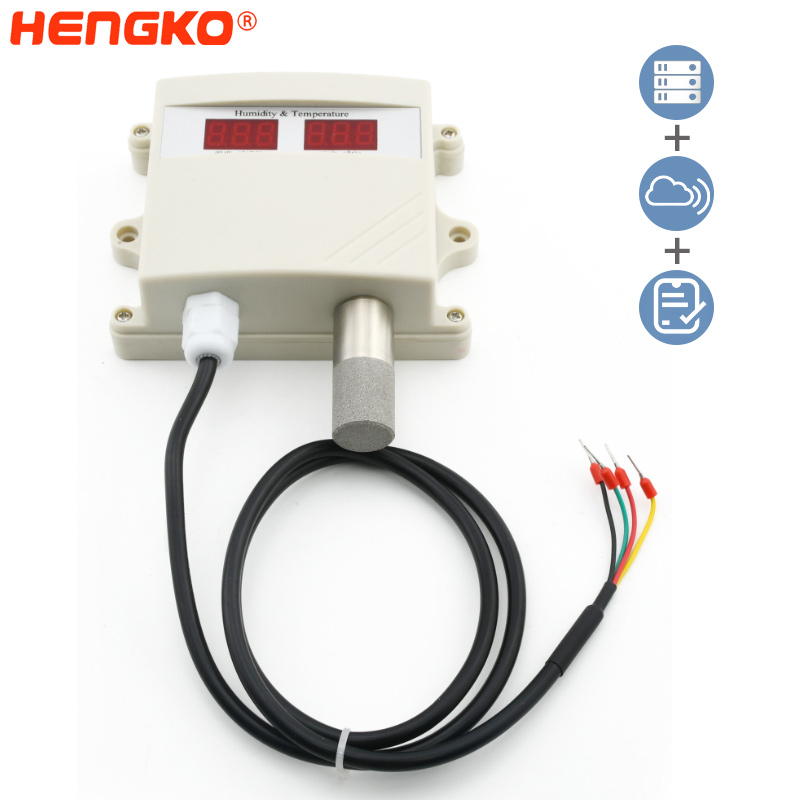Do Need Temperature and Humidity Monitoring In Vaccines and Pharmacies ?
If drugs and vaccines are stored at the wrong temperature, things can go wrong -- making them less effective than they should be, or even chemically altered in ways that inadvertently harm patients. Because of this risk, pharmacy regulations are very strict about how drugs are made, transported and stored before they reach patients.

First, The Standard range of Temperature
The ideal pharmacy room temperature range for most medicines is between 20 and 25 degrees Celsius, but different medicines and vaccines have different temperature requirements that must be consistently followed. Drug manufacturers must adhere to strict quality control standards in order to manufacture and deliver drugs under correct storage and transportation conditions. If the temperature deviates from the specified range, this is called temperature offset. How the temperature offset is handled depends on whether the temperature is above or below the specified range and on the manufacturer's instructions.
Manufacturers must comply with and document temperature controls during the handling of bulk products, packaged products, and shipped products until they reach their final storage location, such as a pharmacy. From there, pharmacies must assume responsibility for the appropriate pharmacy room temperature range and keep records in accordance with regulations and individual product instructions. Temperature and humidity recorder products are used to record the temperature and humidity factors during transportation. The bright and clear display of USB temperature and humidity recorder shows the current reading and equipment status at a sight, and the product is attached with a bracket for solid wall-mounted installation. El-sie-2 + uses standard AAA batteries with typical battery life of more than 1 year.
Second, Refrigeration and Cold Chain
Many vaccines and biologics distributed from pharmacies rely on the so-called cold chain. The cold chain is a temperature-controlled supply chain with specific monitoring and procedures. It starts with the manufacturer's refrigeration and ends in the correct pharmacy room temperature range before being distributed to patients.
Maintaining the cold chain is a major responsibility, especially in the face of events such as the COVID-19 pandemic. COVID vaccines are susceptible to heat and rely on an uninterrupted cold chain to maintain their efficacy. According to the CDC, an effective cold chain in its vaccine storage and handling toolkit relies on three elements:
1.Trained staff
2.Reliable storage and temperature and humidity monitoring instrument
3.Accurate product inventory management
It is important to be vigilant throughout the product lifecycle. Maintaining accurate control over temperature storage conditions has become one of the main responsibilities of pharmacies. When the cold chain is broken, this can lead to products that are less effective -- meaning higher doses for patients, higher costs for suppliers, and damaging public perceptions of vaccines, drugs, or manufacturing companies.
The naked eye cannot tell if the product is stored in proper conditions. For example, vaccines that have been inactivated by freezing temperatures may no longer show up frozen.This does not indicate that the molecular structure of the product has changed in a way that would result in a reduction or loss of potency.
Third, Storage and Temperature Monitoring Equipment Requirements
Pharmacies should follow best practices and use only medical-grade refrigeration units. Dormitory or home refrigerators are less reliable, and there may be significant temperature fluctuations in different areas of the refrigerator. Special units are designed to store biological agents, including vaccines. These units have the following characteristics.
Microprocessor based temperature control with digital sensor.
Fan forced air circulation promotes temperature uniformity and rapid recovery from out-of-range temperatures.
Forth, temperature and humidity sensor transmitter
According to CDC guidelines, each vaccine storage unit must have one TMD. TMD provides an accurate, round-the-clock temperature history, which is critical for vaccine protection. CDC further recommends a special type of TMD called the Digital Data Logger (DDL). DDL provides the most accurate storage unit temperature information, including detailed information about temperature offset. Unlike simple minimum/maximum thermometers, DDL records the time of each temperature and stores the data for easy retrieval.
Hengko provides various models of temperature and humidity sensors for remote and on-site monitoring. Each parameter is transmitted to a remote receiver as a 4 to 20 mA signal. The HT802X is a 4- or 6-wire optional industrial temperature and humidity transmitter. Its advanced design combines digital capacitor humidity/temperature chips with microprocessor based linearization and temperature drift compensation technology to provide proportional, linear and high-precision 4-20 mA output current in a variety of applications.
Strictly controlling temperature requirements is a complex process, from the manufacturer to the pharmacy's final storage. Selecting the right equipment for the job, placing it in the right environment, and then monitoring it correctly with the right temperature and humidity detection technology are key to patient safety and the effectiveness of critical drugs and vaccines.
Send your message to us:

